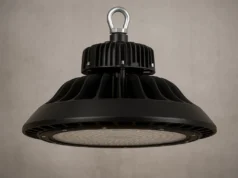When transporting valuable equipment, choosing the right protective case is essential for ensuring safety, durability, and convenience. Whether in the music industry, event production, or a traveling professional, the type of case you use can significantly impact how well your equipment is protected during transit.
Two commonly used options are road cases and standard cases. While both protect your gear, they differ greatly in design, construction, and intended use. Explore the differences between road and standard cases to help you determine the best choice for your needs.
What Is a Road Case?
A road case, often called a flight or touring case, is a rugged, high-durability container designed to protect delicate or expensive equipment during frequent transportation. Originally popularized in the music and entertainment industries, these cases are now widely used across multiple sectors for superior protection.
Key Features of Road Cases:
- Construction: Made with heavy-duty plywood, aluminum edges, and steel ball corners.
- Protection: High-density foam lining for shock absorption.
- Mobility: Built-in casters (wheels) for easy transport.
- Customization: Custom-built compartments for specific equipment.
Road cases are engineered for professional use where equipment needs to be transported frequently with maximum protection.
What Is a Standard Case?
A standard case is a lighter, more general-purpose carrying case designed for less demanding applications. These cases are commonly used for everyday storage and short-distance transport.
Key Features of Standard Cases:
- Construction: Made from plastic, lightweight metal, or composite materials.
- Protection: Minimal padding, often without custom foam inserts.
- Mobility: Usually lacks wheels and handles for extended transport.
- Usage: Ideal for home use, occasional travel, or short-term storage.
Standard cases are best for lightweight, low-risk transport where maximum protection isn’t necessary.
Material Comparison: Road Cases vs. Standard Cases
| Feature | Road Case | Standard Case |
| Outer Shell Material | Plywood with aluminum reinforcement | Plastic, lightweight metal, composites |
| Interior Padding | High-density foam, custom inserts | Basic foam, minimal padding |
| Hardware Strength | Steel ball corners, reinforced edges | Basic metal or plastic latches |
| Weight | Heavier due to reinforced materials | Lighter, easier for basic handling |
| Durability | Extreme impact and drop resistance | Moderate impact resistance |
Road cases prioritize durability and impact resistance, while standard cases focus on convenience and light protection.
Key Differences Between Road Cases and Standard Cases
1. Durability and Build Quality
- Road Cases: Built for extreme durability with reinforced edges, steel ball corners, and thick plywood panels.
- Standard Cases: Made from lightweight plastic or metal with basic protection.
Road cases are ideal for frequent travel and rough handling, while standard cases suit lighter use.
2. Protection Level
- Road Cases: Designed for high-impact protection with shock-absorbing foam.
- Standard Cases: Basic padding, more suited for casual transport.
Road cases provide superior safety for valuable equipment like musical instruments or camera gear.
3. Customization Options
- Road Cases: Often custom-built with specific compartments for equipment.
- Standard Cases: Limited to generic compartments and padding.
If you need precise fitment for gear, road cases are the superior choice.
4. Mobility and Handling
- Road Cases: Often equipped with heavy-duty casters and handles.
- Standard Cases: Usually lack wheels, relying on hand-carrying.
Road cases make transporting heavy equipment across venues or airports easier.
5. Cost and Investment
- Road Cases: Higher upfront cost due to premium materials and durability.
- Standard Cases: More budget-friendly for basic protection needs.
Consider the value of the equipment when deciding between protection versus cost.
When to Use a Road Case?
Ideal for:
- Touring musicians and bands.
- Event production companies.
- Professional photographers and videographers.
- Medical and scientific equipment transport.
- Trade shows and exhibitions.
Best Use Cases:
- Live concerts: Protection for amplifiers, soundboards, and instruments.
- Film production: Secure storage for high-end cameras and lighting gear.
Road cases excel when frequent travel and maximum protection are essential.
When to Use a Standard Case?
Ideal for:
- Home storage solutions.
- Occasional personal travel.
- Office supplies and documents.
- Smaller gadgets and tools.
Best Use Cases:
- Short trips: Transporting personal items or small tools.
- Home storage: Safekeeping non-fragile items like documents or accessories.
Standard cases work best for low-impact situations where portability matters more than durability.
Advantages of Road Cases Over Standard Cases
Long-Term Equipment Protection
- Designed for impact resistance and long-term durability.
Secure Locking Systems
- Often includes TSA-approved locks for added security.
Professional Appearance
- Sleek, professional design for client-facing situations like trade shows.
For long-term investments in equipment safety, road cases offer unmatched protection.
Conclusion
The choice between a road case and a standard case depends on your equipment’s value, the travel frequency, and the level of protection needed. Road cases are superior for professional use where durability, protection, and mobility are essential. On the other hand, standard cases are ideal for lighter, less demanding applications where cost and portability matter more.
Explore GearSource‘s premium selection of road cases today and safeguard your equipment with professional-grade protection.








